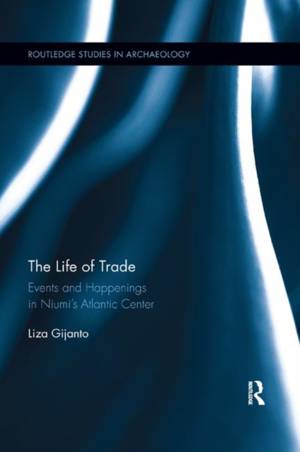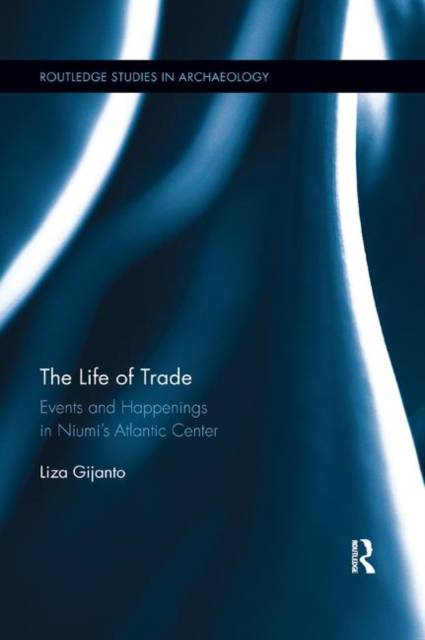
- Afhalen na 1 uur in een winkel met voorraad
- Gratis thuislevering in België vanaf € 30
- Ruim aanbod met 7 miljoen producten
- Afhalen na 1 uur in een winkel met voorraad
- Gratis thuislevering in België vanaf € 30
- Ruim aanbod met 7 miljoen producten
Omschrijving
The Life of Trade utilizes archaeological and historical sources to address the dynamic nature of the Atlantic trade on the Gambia River. Taking a fresh multi-disciplinary approach, the book highlights the region's atypical position as a commercial crossroads and access point for both interior and Atlantic markets. This engagement with a diversified commodities trade brought about the formation of a multi-ethnic, multi-religious community which was supported by, and reliant on, economic exchange. Gijanto situates the Niumi Kingdom within the emerging capitalist world-system through the analysis of data collected from archaeological excavations at four sites: the central multi-ethnic trading village of Juffure, the associated British merchant company factory there, and the two nearby settlements of San Domingo and Lamin Conco.
As part of the Atlantic world, residents were in a continual process of negotiation between their local socio-economic structures and the commodities and ideas introduced by foreign traders. Gijanto sheds light on these interactions, exploring the impact of increased access to wealth by examining a number of excavated objects associated with public display, including European glass trading beads, faunal and botanical remains and locally produced ceramics. Presenting new perspectives on the complex nature of the Atlantic trade in the region The Life of Trade enriches our understanding of this period of great change in West Africa.
Specificaties
Betrokkenen
- Auteur(s):
- Uitgeverij:
Inhoud
- Aantal bladzijden:
- 234
- Taal:
- Engels
- Reeks:
Eigenschappen
- Productcode (EAN):
- 9780367875442
- Verschijningsdatum:
- 12/12/2019
- Uitvoering:
- Paperback
- Formaat:
- Trade paperback (VS)
- Afmetingen:
- 156 mm x 234 mm
- Gewicht:
- 353 g

Alleen bij Standaard Boekhandel
Beoordelingen
We publiceren alleen reviews die voldoen aan de voorwaarden voor reviews. Bekijk onze voorwaarden voor reviews.











